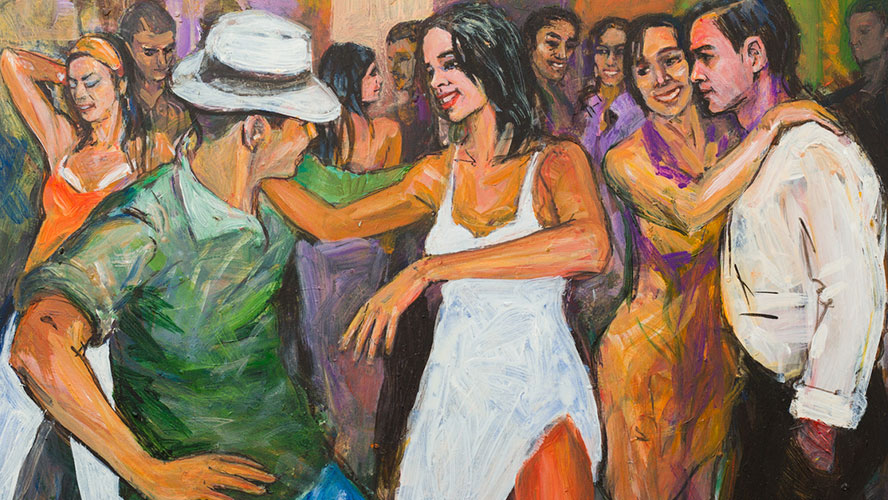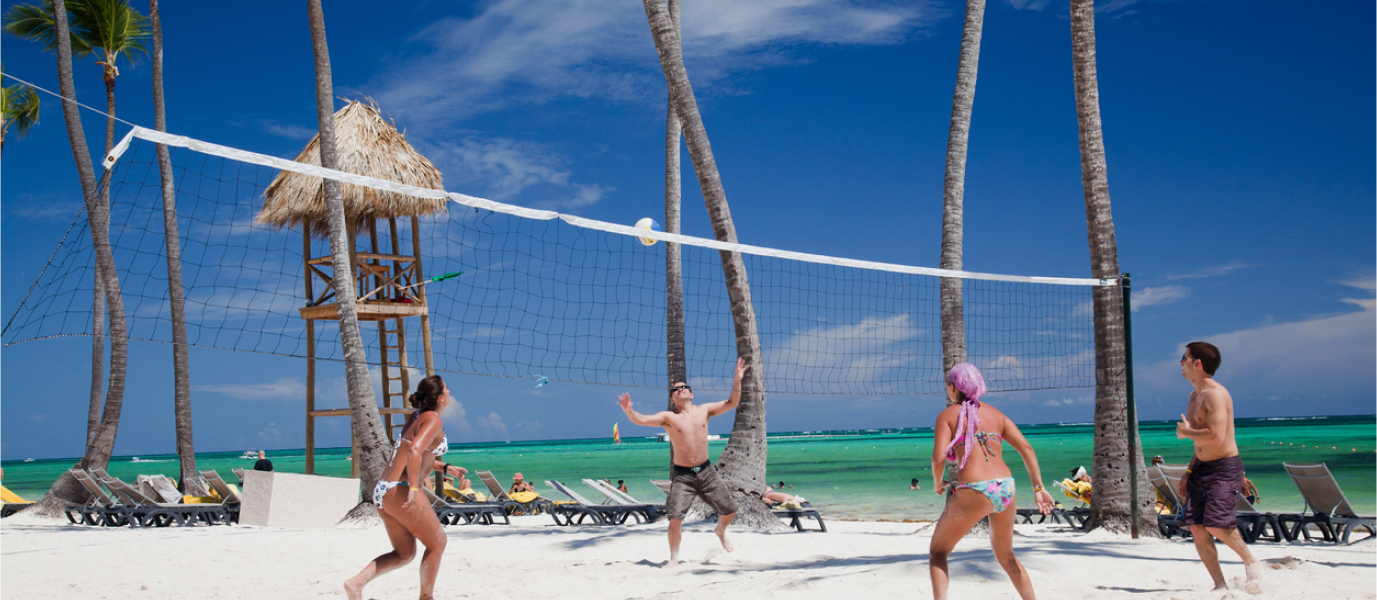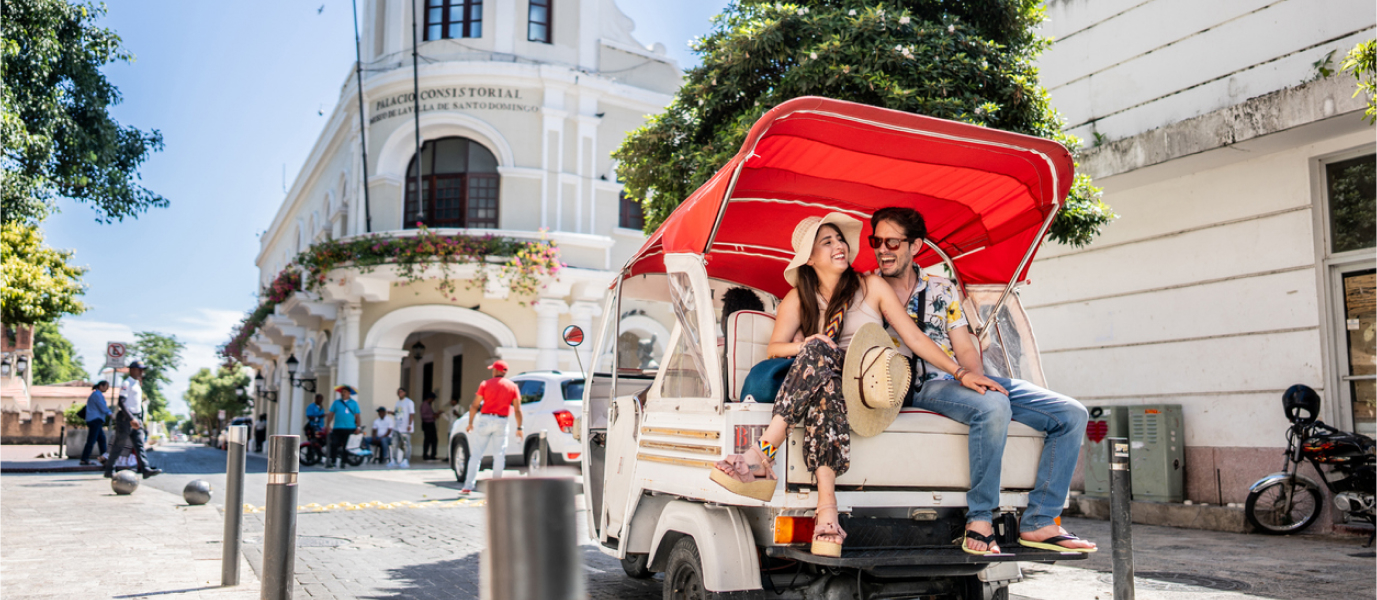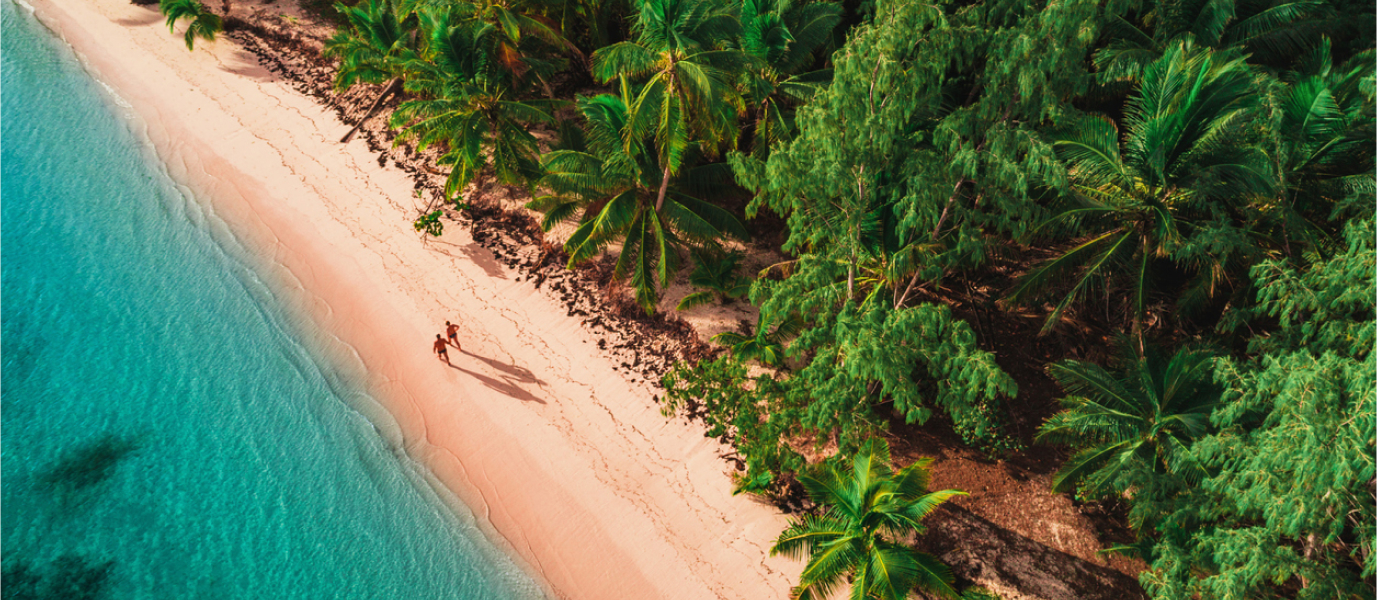There are various options in Santo Domingo and Punta Cana if you’d like to learn these rhythms — activities for all ages tailored to the amount of time the visitor is staying on the island.
Merengue is a Caribbean musical genre that originated in the mid-nineteenth century in the Dominican Republic, and which has crossed frontiers to the point where it has been taken up across the entire Continent of America; it is also popular in various parts of Europe.
Originally, it was played on stringed instruments such as the guitar or the bandurria (a member of the Spanish lute family), but gradually it came to incorporate other instruments: the drum, the güira [a percussion instrument], the saxophone — and occasionally keyboards or timpani.
The dance is highly sensual, flirtatious. It speeds up and slows down, and is full of undulating movements. No longer merely a symbol of the national identity, it has found its way into all aspects of Dominican life, from education (as it is danced from childhood), through family get-togethers, parties and nights out, right through to political campaigns — which goes to prove that no-one can resist dancing merengue.

On November 26, 2005, the president of the Dominican Republic issued a decree designating a National Merengue Day. Years later, in 2016, the United Nations Organization for Education, Science and Culture (UNESCO) declared this particular rhythm an Intangible World Heritage Asset for, among other reasons, “encouraging respect and co-existence between communities”.
On November 3, 2019, the Dominican Republic gained an entry in the Guinness World Records for the biggest merengue in the world, when 422 couples danced to its rhythm in Plaza de España in the country’s capital, Santo Domingo.
Bachata appeared during the early years of the twentieth century, and although etymologically the name means ‘party’ or ‘jamboree’, its melancholy lyrics (which deal with passion, nostalgia and lost love) were first heard in the bars, bordellos and the like of the poorest, most marginalized districts of Santo Domingo.
Like merengue, it was initially looked down on by the élite sections of society, and even became known as the “music of bitterness”. Little by little, however, interest in it increased, and by the 1980s it was widely broadcast on the radio and via other communication media.
Dominican bachata was declared an Intangible World Heritage Asset in December 2019 by virtue of the fact that its music and dance are expressions of the native culture which are ever present in community celebrations and social gatherings, and are ubiquitous from childhood.
Development of this particular musical genre was concentrated into four specific stages from the 1960s onwards — with great exponents such as Rafael Encarnación and Tommy Figueroa, both pioneers of the genre, along with Mélida Rodríguez and Leonardo Paniagua. Its appeal spread to international audiences thanks to Romeo Santos and Juan Luis Guerra.
In November 2019, the record entitled “Fórmula: Vol. 2”, by the Dominican-born bacherato Romeo Santos, was recognized as the Latin American album of the decade by the prestigious Billboard magazine.
From fast to slow, sensual or upping the rhythm
In common with other musical genres, merengue and bachata have given rise to variants — other styles and fusions that somehow accompanied them on their journey from small spaces and particular groups, from rural and somewhat marginalized settings to national and now global dissemination. Needless to say, they have both become cultural symbols of the Dominican Republic
The variants of merengue were initially identified by the regions from which they originated, so the north had Juangomero, Liniero, Cibaeño and Pambiche, while in the south were to be found Palo echao, Pri pri and Ocoeño, and the east had Redondo. Each of these variants is distinguished by the instruments used, and by its drum beats and musical tempo.
Bachata, an intimate, sensual dance for couples, with an emphasis on hip movements, also has different variants and styles. These include Dominican, sensual, traditional, street or urban, and modern, differentiated by their tempo, how close to one another the partners dance, and by the frequency with which feet cross or hips come into contact.
The Dominican Republic, a country with cathedrals of bachata and merengue
The rhythms, music and dance are part of the life blood of the Dominican Republic, whether in its smallest villages, its parks and public spaces, or its biggest cities. Bachata and merengue await you in so many places, to stir your body and soul, in a form that appeals to all tastes and at a price to suit all pockets.
In Santo Domingo, Jet Set is one of the island’s most iconic discos and one of the best places to enjoy tropical rhythms, with live orchestras on Mondays; the cost of admission is between $30 and $60.

Jet Set is located in Plaza El Portal, Avenida Independencia Km. 6, in Santo Domigno.
Also in the Dominican Republic’s capital city, at No. 153 Calle Hostos, you will find El Sartén, which is known as “the cathedral of Caribbean music” or “the home of son”, because the music, and particularly the Caribbean rhythms, is worshipped here.
Santo Domingo’s Ferro Café night club is only a small venue, but it features performances by artists of great international standing and the finest exponents of both bachata and merengue.
The establishment can be found 1st Calle Manuel de Troncoso / corner of Roberto Pastoriza, Plaza Dorada, Santo Domingo.
One of the Dominican Republic’s most famous dance clubs is Mangú Disco Bar, in Avenida Occidental de Punta Cana, Bávaro. The place has a tropical beach vibe, and brings together locals and visitors alike to enjoy the music to the full.
Oro (at kilometer 28 on Boulevard Turístico del Este in Punta Cana) is the Dominican Republic’s most modern disco, with a state-of-the-art light show and sound system. Although international stars — including Daddy Yankee — have appeared here, there is no lack of local rhythms.
Merengue and bachata are much in evidence at festivals and celebrations.
Many countries of the world look forward excitedly to the summer so that they can enjoy festivals or musical events, but in the Dominican Republic these can equally be enjoyed in all kinds of places all year round.
The Merengue Festival is held in Santo Domingo in July, and extends as far as the town of Boca Chica. Various areas of the city and the Malecón echo to the sound of merengue for a whole week, and thousands of people dance, sing and celebrate to this catchy rhythm.
Although it isn’t a festival, the Dominican Republic celebrates Restoration Day on August 16, as this was the day in 1863 when this Caribbean country declared war on Spain. With elaborate floats and, of course, bachata and merengue, this celebration is a great carnival.
The Festival of Merengue and Caribbean Rhythms takes place in Plaza Juan Barón in Santo Domingo’s Malecón to pay homage to this genre, and to nurture the city’s Caribbean roots. Since it now attracts such huge audiences, the organizers have extended this festival to Puerto Plata and Bávaro.
The Colonial Fest takes place at the end of November, and is a commemoration of Dominican identity. The country’s history, culture and cuisine (as well as its music in the form of merengue and bachata), allow visitors a way to experience the quintessence of the Dominican Republic.
However, the Dominican Republic offers much more than just merengue and bachata.
Merengue and bachata are the hallmarks of the Dominican Republic, but that does not mean that visitors cannot enjoy other types of music, Caribbean or otherwise.
Son, for example, arrived here between 1870 and 1890, and is derived from bolero with African and Spanish musical influences. Later, between 1930 and 1950, it enjoyed great success in the country — particularly in the Cibao region, where it was championed by several groups, but nowadays this genre can be enjoyed in any number of places.
Salsa is ever present in the Dominican Republic which, although it is the birthplace of merengue and bachata, has also made an important contribution to the development of salsa — and the country did give rise to the New York salsa movement.
With its international focus, jazz is also well represented in the Dominican Republic. Jazz merged with the musical culture of African predecessors, and has given rise to trends such as meren-jazz and Afro-Dominican jazz, which are now being added to the musical spectrum of this part of the Caribbean.






























































